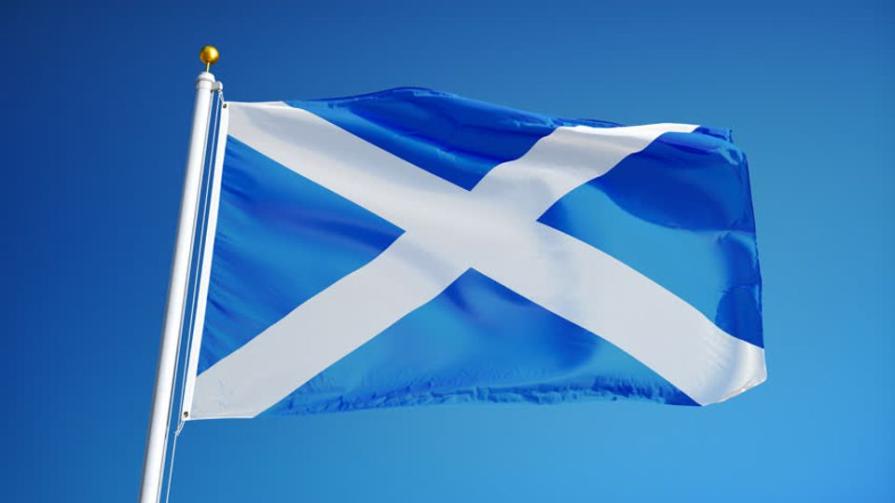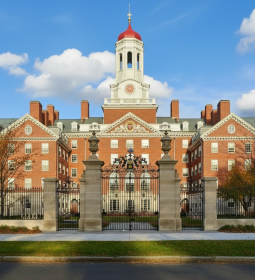The Scottish flag, recognized as a national symbol, is a white saltir - an oblique cross placed on a blue background. Also known as St. Andrew's Cross or St. Andrew's Cross. Used by the government of the highland kingdom and government agencies, it has a glorious and difficult history.

The first written mention of the use of this symbol dates back to the XVI century: Sir David Linsdale mentions it in the Mountain "Register of Scottish Weapons" as used since ancient times. He gives a reference to the case of the XV century, when on a golden banner with a red lion - the flag of the royal dynasty of the Dunkelds - at the insistence of the wife of King James III Margaret in the kryzh (upper left corner) painted a white cross on a blue background - saltir. This heraldic term denotes a beveled diagonal cross and dates back to the Old French word soltoir,which in turn comes from the Romans.
Historically, certain natural dyes were used for production, in particular indigo, vaida and many others; royal power in Scotland was never rich, so even the flag had many variations of blue. In the seventeenth century, during the conclusion of a personal union between the kingdoms of England and Scotland under the rule of James, the son of Mary Stuart, the choice fell on the darkest shades of blue - which was due to the greater durability of dark blue dye - after which it became standard for allied flags both army and navy.
Despite the merger with the wealthier UK, diversity persisted until 2003, when a Scottish parliamentary committee met to consider a petition to standardize the colours of the national flag. In this process, the opinion of the Royal Army, the Office of the Prime Minister, as well as the sovereign's wife Prince Philip was taken into account.
A proportional ratio of parties is not established, but 3 to 5 is most often used - as in other kingdoms of the Commonwealth of Nations. Many manufacturers of symbols use a ratio of 1: 2, 2: 3 or 5: 4 - this option insists Lord Lyon, the royal keeper of weapons.

From the depths of centuries
The Erbot Declaration of 1320 notes that the country was converted to the Christian religion by St. Andrew, the first of the apostles. The image of this man is fixed on the royal seals from 1180, as well as on the seal of the Scottish guard, dating back to 1286. In addition, this symbol was used by Bishop William Lamberton - the crucified saint adorned his seal.
The oblique cross appeared in these mountains as a military symbol without any connection with the saint. One with the other was first associated at the end of the XIV century: the Scottish Parliament in 1385 declared that all the soldiers of Scotland and France, united by the struggle against English rule and King Richard II, should fight under the banners with the cross of St. Andrew, as well as with his image on his clothes - on the chest and back. James, the second Earl of Douglas, used such a pennant at the Battle of Oterburn. It was then displayed on the tapestry "The Blue Veil of the Edinburgh Crafts", presumably woven by Margaret, the wife of James III.
On the sea, St. Andrew first soared above the deck of the karakka "Great Michael" in 1507. It became a heraldic symbol in 1542 - at the same time the shield began to be supported by two armorial unicorns. Walter Bauer in his "Chronicle of the Scotts" claimed that the said heavenly patron appeared to King Kenneth II in 832 before the battle with the Anglo-Saxons. Andrew advised him to follow the signs from heaven, and specifically the cross of our Lord Jesus Christ. And the writer George Buchanan turned the cross into St. Andrew's - a miraculous white cross in the heavenly blue.
Union Jack and the colors of the Highlanders
From the very beginning of the two-hundred-year unification process, the Scottish saltir tried to combine with english. In 1606, they were united to symbolize the alliance of kingdoms that had taken place three years earlier - the coronation of James VI of Scotland by the English and Irish crowns inherited from Elizabeth.
The king then declared that the unity of the South and the North of Britain on the seas should be emphasized in order to avoid disagreements in the future, and, referring to the will of the Crown Council, announced: from now on all the subjects of the single Crown carry on the top masts of their ships the Red Cross - otherwise George, and white, St. Andrew. These symbols are connected by a heraldic service.

Interestingly, the English ships wore a red cross in the foreground, and the Scottish ones wore a white cross. At the state authorities in London, the first was red, which caused discontent of the mountain nobility. John Erscine, Earl of Mary, became the spokesman for the general opinion by filing a complaint with the Scottish Privy Council, explaining the claims and proposing some changes. His proposed drawings died in a fire in the Houses of Parliament in 1834; however, other evidence, including memoirs and newspaper publications, confirms the existence of such an initiative.
Parallel use with some advantages for the English cross lasted almost a hundred years, when in April 1707, shortly before the signing of the Act of Union, which secured the final unification of the two kingdoms, one of the royal ministers of St. George presented a new symbol for Queen Anne.
Respecting the Scottish request, the projects included a version with Andrew's cross on top of English – as "the allied Scottish flag used in this part of the state". However, Anna and her council approved only one version.
And since 1801, another cross from Ireland appeared on the flag, paying tribute to St. Patrick as the patron saint of this country. Once again, red prevailed over white – although the debate on this subject continued. Some suggested a return to the flag of oliver Cromwell's Protectorate, when 2 Scottish and 2 English crosses were depicted on the four fields of the dissected flag. But this proposal was not popular, as it was anti-monarchical in essence and content.














